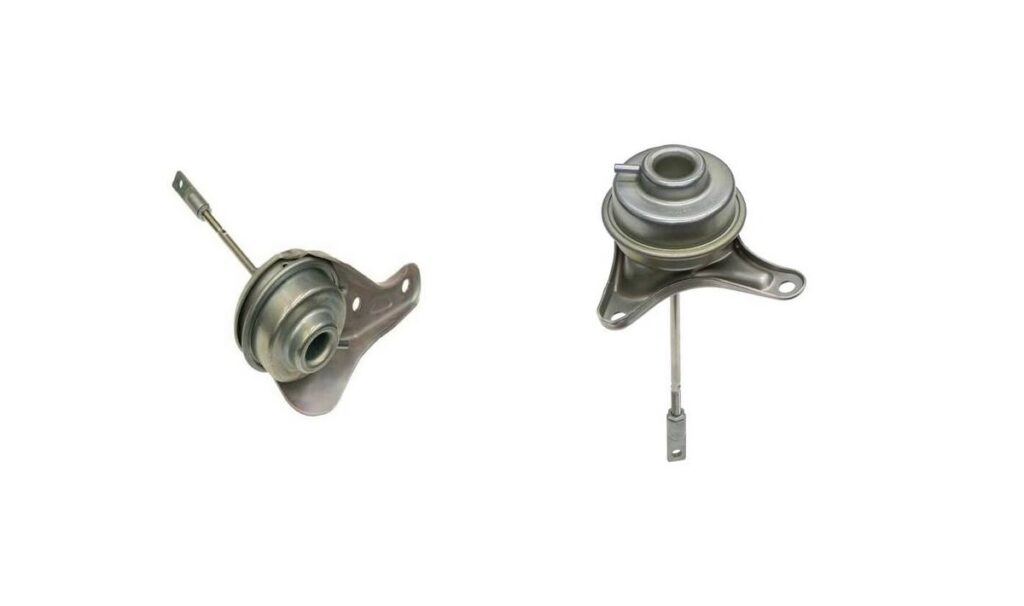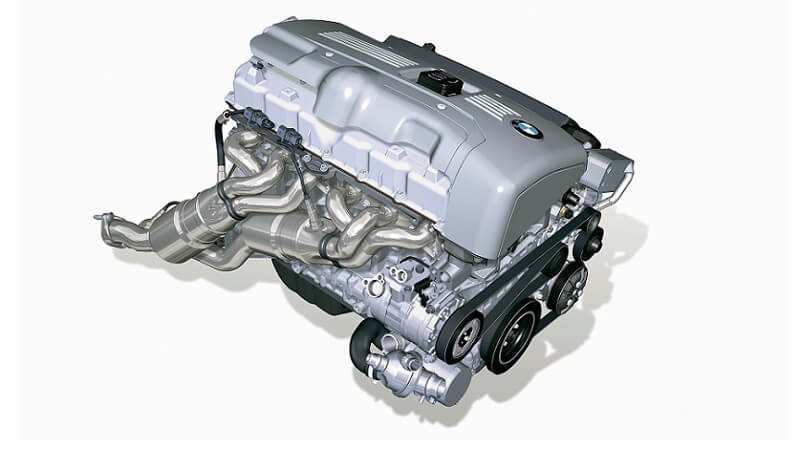The BMW N54 engine has a few common failure points, including high-pressure fuel pumps, water pumps, and VANOS solenoids. Another weak point of this engine is the turbochargers.
This issue is the largest reason why people avoid buying models such as the 335i, which are otherwise great machines. If you are facing an N54 turbo failure, and are looking for answers, or you just want to find out whether the issue is really that bad, this guide might help you. Let’s talk about N54 turbo failure.

How Does a Turbocharger Work?
In short, the turbocharger helps the engine generate more power by forcing additional air into the intake, thus increasing the potential of the combustion process. By adding more air, you can inject more fuel into the engine, which ultimately leads to more power at the wheels.
The turbo is powered by exhaust gasses that exit the engine. As they pass the exhaust side of the turbo, the intake side spools up sucking in more air. The blades on your average turbo can rotate at speeds exceeding 200,000 revolutions per minute. That’s a lot of power to push air into the engine. Controlling the amount of air pressure is a device called a wastegate.
A wastegate is a simple often vacuum-operated mechanical component that dictates how much exhaust gas reaches the turbo. It does this by diverting some of the exhaust gases when the turbo has reached the desired air pressure.
The N54 has two turbos running in parallel, which caused a fair bit of controversy when this engine was first released. As it turns out, the disgruntled masses had a very good reason to be dissatisfied.
What Causes N54 Turbos to Fail?
There are several reasons why the N54 turbos fail. In the majority of cases, the cause of the issue is either a bad wastegate or blown seals. Both of these have grounded a massive number of BMWs that feature this engine. Here’s a breakdown of each of these issues.
Wastegate Rattle
To say that the original BMW N54 turbo wastegate design was subpar would be an understatement. BMW has engineered a wastegate with fairly loose tolerances, which would cause the wastegate actuator arm to flutter. Worse yet, over time the wastegate bushing on the disc that closes the exhaust gas bypass begins to rattle. As a result, you get a wastegate that isn’t closing completely and an engine that sound pretty rough.
The wastegate issue was so widespread that BMW had to issue a recall. Even so, many BMW N54s are still out there with their original turbos, meaning that you can easily run into one if you’re looking to get one of these cars.
Oil Seal Failure
The other common issue with these turbos is oil seal failure that leads to oil entering the intake and causing the car to burn oil. There are a few reasons why this happens, and the lack of maintenance is one of them. Skipped oil changes and the use of low-quality oil are responsible for a fair share of blown seals on these turbos.
The other major reason is too much boost. When N54 engines first appeared, everybody wanted to squeeze more power out of the new bi-turbo setup. Unfortunately, the turbos on these cars have proven to be quite sensitive to high boost, to the point where they would blow their oil seals and let the oil in.
Is the N54 Turbo Failure Preventable?
There are a few good measures that can ensure the long-term reliability of your turbocharger and stop it from failing prematurely. First, stay on top of your oil changes and use quality oil. We suggest using genuine BMW oil, or a quality synthetic oil such as Motul 8100 X-Cess.
Don’t push the stock turbos with aggressive engine tunes. The block and head might take the abuse, but the turbos won’t. Get yourself a set of beefier aftermarket turbos if you want to push more power to the wheels
Just like with any other turbo, it is highly recommended that you give the engine, and most importantly the turbo, a chance to cool down before shutting it off, especially if you were giving the beans that day. Oil and coolant flow is crucial for keeping the turbos within optimal temperatures and if you turn off the engine, you are stopping the oil and coolant flow to the turbo, thus preventing the turbo from cooling down effectively.
Just do not push the engine hard on the last miles of your drive and let it idle for a few seconds before shutting it off. These measures are even more important in cold climates, where revving a cold engine after a freezing night is probably the last thing you should do. With that said, this applies universally and is not specific to the N54 engine.
How to Tell If Your N54 Turbo is Faulty?

The most common symptoms of a failing turbocharger include increased fuel consumption, loss of power, excessive smoke coming out of the exhaust (usually blue-colored), and pronounced turbo noises, which sound like high-pitched whistling.
You may also observe oil leaks around the turbo and overheating of the engine. The DME may also signal there is a problem with the turbo and display the check engine light in the instrument panel. With that said, it is important to note that these symptoms are not universal to a turbo failure. If you are experiencing any of the issues, it is still worth checking other engine components before replacing the turbo, in order to avoid unnecessary costs.
How to Fix the N54 Turbo Failure?
The BMW turbochargers are under warranty for up to 82,000 miles or 10 years, whichever takes place first. As the N54 engines were in production until 2016, there is still a chance that your turbo repair may be covered under the warranty.
When dealing with symptoms of a failing turbo yourself, it is important to check not only the turbo itself but also the inlet pipes, hoses, and lines that lead to the turbo. While replacing the turbo itself is the most likely scenario, there is a chance that you fix yours if you’re lucky.
This leads us to a possible fix for the wastegate rattle. This most often results from restricted or bent vacuum hoses. The fix may be as simple as adjusting an improperly secured hose in a mounting clip. The wastegate issue might also be fixed by adjusting the end link on the wastegate actuator, which requires advanced scan tools. You might just need to replace the wastegate actuators. We recommend sticking to genuine BMW parts. Just remember that the two wastegates aren’t the same. There is a difference between the front and rear turbo wastegate.
You should also inspect the intercooler hoses and inlet pipes for any ruptures. The turbo inlet pipe is the most difficult to inspect, as it is tightly wrapped around the rear of the engine without much space around it. This also makes it difficult to replace. Still, replacing a rubber seal in the inlet pipe is much easier than replacing the whole turbo, both from a cost and labor perspective. If you end up having to replace the turbos, we strongly suggest that you stick to genuine BMW units unless you’re looking to squeeze more power from your engine. The front turbo and rear turbo both come with new exhaust manifolds and are ready for installation.
When replacing the turbo, inspect and clean the intake system. If your turbo has failed because of lodged debris, there is a chance that there will be more that could make its way into the new turbocharger as well. The same goes for the turbocharger oil lines.
The N54 – a Great Engine Despite Its Issues
The BMW N54 is great and exciting. With more than 300 horsepower and 300 lb.-ft of torque, you could not ask for much more. However, being the first mass-produced turbocharged petrol engine developed by BMW, it is understandable that there are some issues to be aware of.
The N54 turbo failure is certainly one of them, and while it can get quite expensive and laborious to repair, it is well worth the trouble. Once fixed, you will be able to enjoy one of the most potent engines ever offered by BMW. If you are looking for a genuine turbo replacement, or any other parts for your BMW, head to newparts.com, where you can choose from a wide selection of genuine BMW parts.





